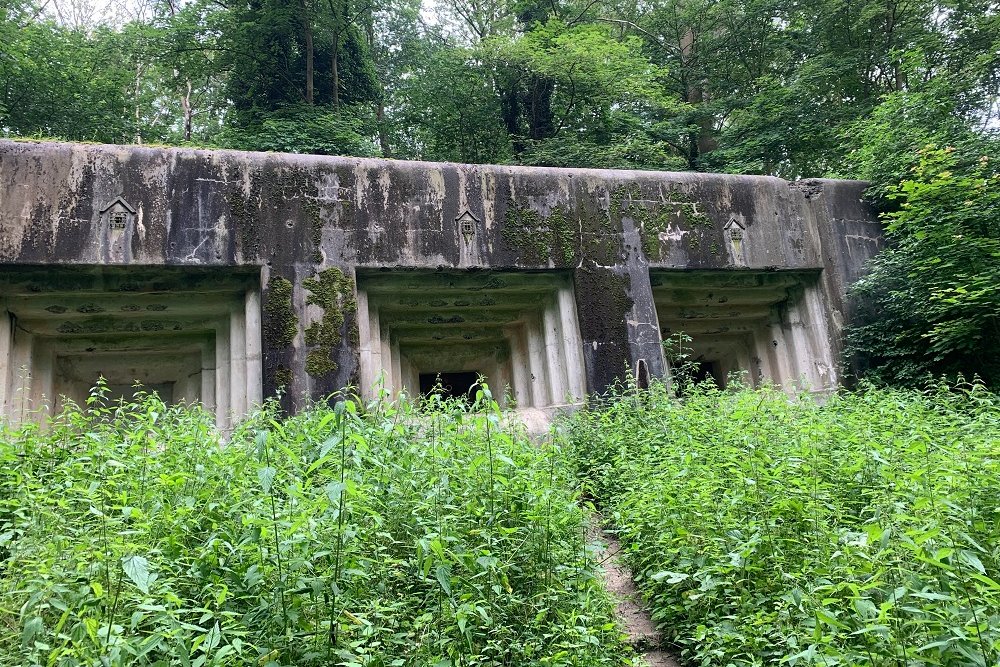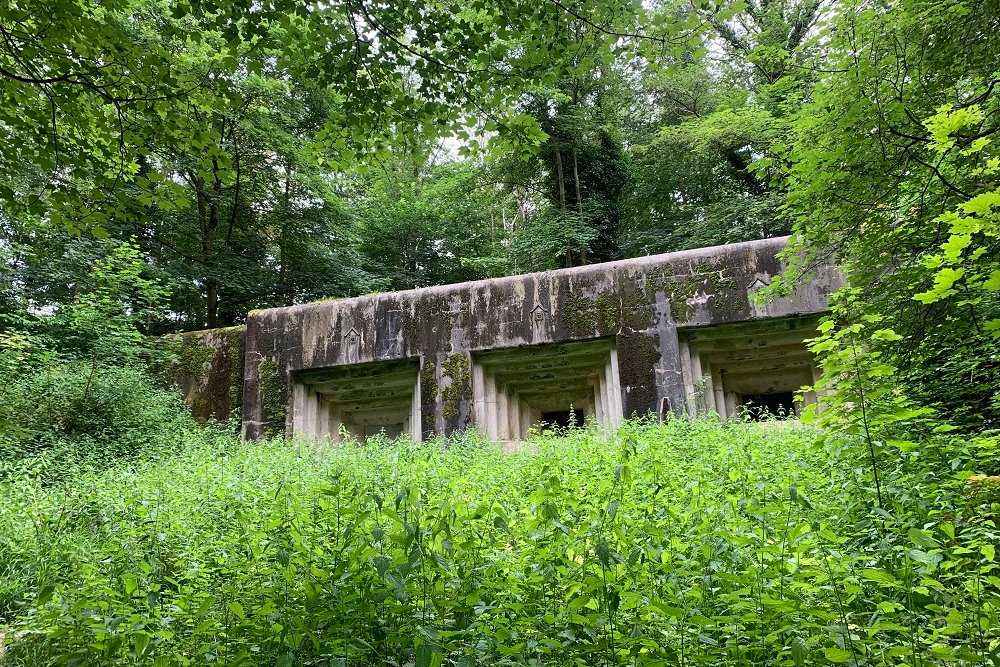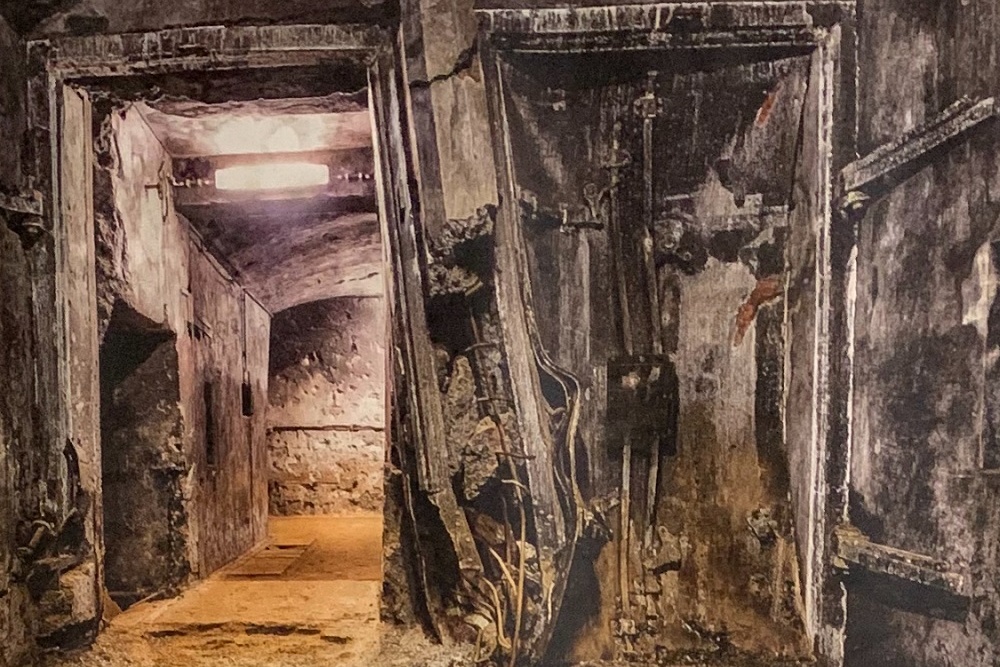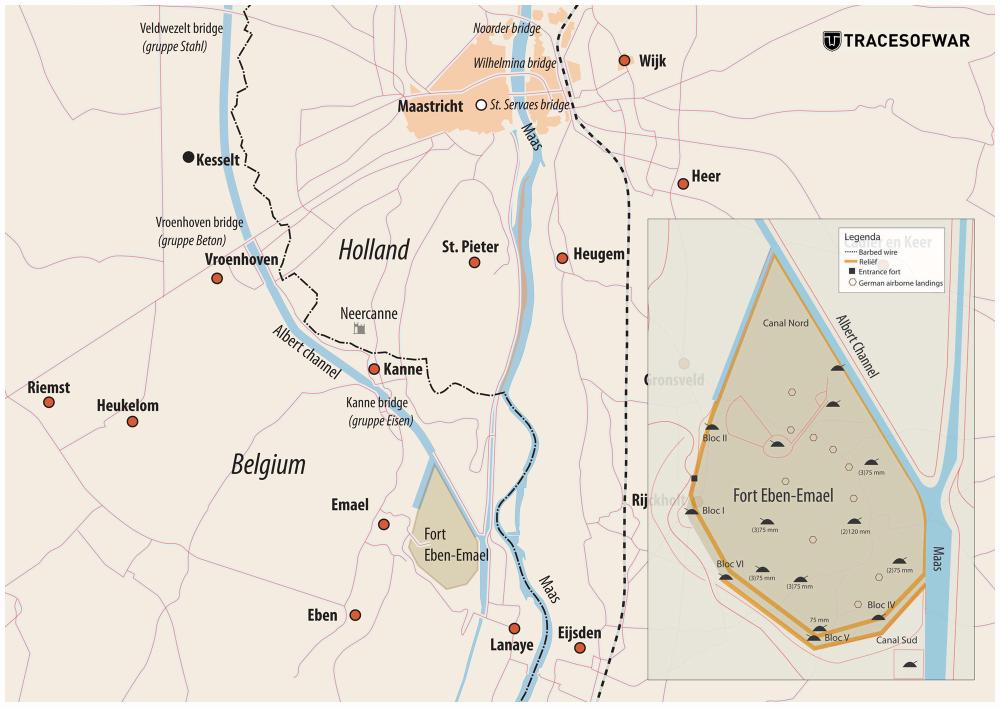Bunker Maastricht 1
Bunker Maastricht 1, is one of the bunkers where the Germans managed to enter the fortress. After gaining access by using a hollow charge on the left cannon (this was later sealed with concrete), they also applied a 12.5 kg hollow charge to the closed steel doors under bunker Maastricht 1.
After the Belgians retreated to behind the steel doors that gave access to the elevators and stairs to the casemate, steel bars were stacked in front of the doors from the inside. Sandbags were placed behind the bars. In this way it was thought to prevent a breakthrough when te Germans tried fo force the doors.
Also, the Belgian garrison had posted 4 soldiers behind the doors. Seated behind a pile of sandbags, equipped with a machine gun they were ready to defend this point where the Germans had entered the fortress.
However, the Germans applied a hollow charge of 12.5 kg to the steel beams behind the left door, closed the door to elapse the effect of the operation, then after the explosion the left door was smashed into the fort, and the right door was deformed. The four soldiers behind the sandbags had no chance, and were killed in the blast. See photo 5.
These were the soldiers;
COROMBELLE Albert age 24, sentry, he is buried on the field of honor of Robermont in Liege.
DUJARDIN Joseph, 19 years !, soldier, he is buried in the field of honor of Herstel-Rhees.
GILLET Emile, age 30, soldier, he is buried in a family grave at Franchorchamps
MASSOTTE Willy, age 20, soldier, he is buried in a family grave at Visé.
Do you have more information about this location? Inform us!
Source
- Text: Ed Lewandowski
- Photos: Ed Lewandowski
Related books
Nearby
Museum
- Fortress Eben-Emael - Eben-Emael (Bassenge)
- The Bridge of Vroenhoven - Vroenhoven (Riemst)
- Museum Maison du Souvenir - Hermalle-sous-Argenteau
Point of interest
- Fortress Eben-Emael - Administration building - Eben-Emael (Bassenge)
- Temporary Cemetery Fallen Soldiers Fort Eben-Emael - Eben-Emael
- M41 Walker Buldogg & M4 Sherman - Eben-Emael (Bassenge)
Monument
- Commemorative Plates Fort Eben-Emael - Eben-Emael (Bassenge)
- War Memorial Fort Eben-Emael - Eben-Emael (Bassenge)
- Memorial 120th Regiment 30th Division USA - Eben-Emael (Bassenge)
Cemetery
- Belgian wargraves Kanne - Kanne (Riemst)
- Belgian War Graves Lanaye - Lanaye (Visé)
- Commonwealth War Grave Lanaye - Lanaye (Visé)
Remembrance Stone
- Stumbling Stone Vroenhof 3 (now number 16) - Eijsden
- Stumbling Stones Diepstraat 55 - Eijsden (Margraten)
- Stumbling Stone Steegstraat - Eijsden
Fortification
- Fort Eben-Emael Bloc II - Eben-Emael
- Fort Eben-Emael - machine-gun bunker Mi Nord - Eben-Emael (Bassenge)
- Air Vent Fort Eben-Emael - Eben-Emael










